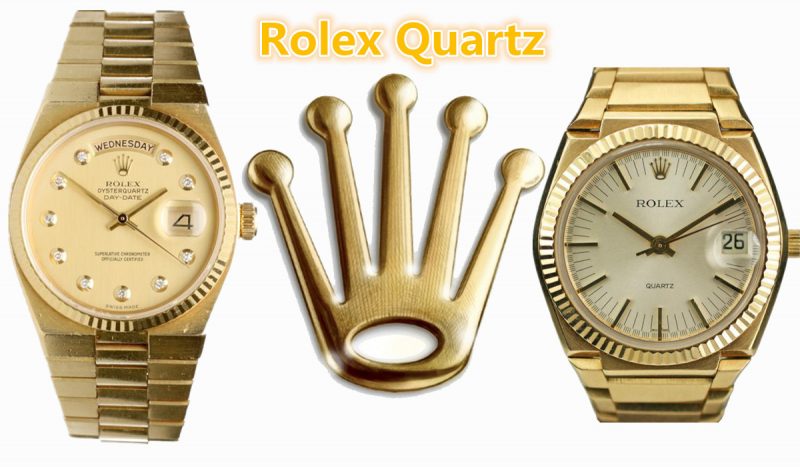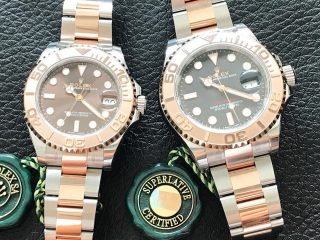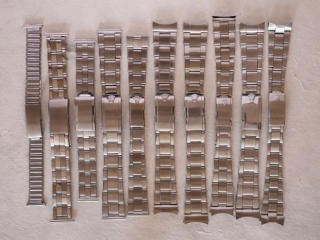Quite a few of watchmakers had went under or suffered in quartz crisis in the 1950-1970. Those that survived have been famous or top brands, like Rolex. The first quartz by Bell Labs featuring high vibrations and high accuracy was concerned highly, but its disadvantage is the huge size. With the progress of science and technology, quartz watches became smaller and smaller. To the 1960s, they were small enough to be put in the case. In 1962, approx 20 watchmakers, Patek Philippe, Rolex, Piaget, IWC, Jaeger-LeCoultre, Omega, Longines and Zenith included, built an organization-Centre Electronique Horloger to develop quartz wristwatches together.
Rolex Geneva And Rolex Bienne
Before 2004, there were two “Rolex” in the watchmaking field. Hans Wilsdorf founded Rolex in 1905, but Rolex couldn’t be able to produce in-house movements at that period, so Mr. Wilsdorf established cooperative relationship with Aegler, a factory specializing in producing movements. Mr. Wilsdorf moved his company to Geneva in 1919. In the second year, it changed its name to Montres Rolex S.A (or Rolex Geneva). Aegler only supplied movements for Rolex Geneva after 1936, and it changed its name to Manufacture des Montres Rolex S.A (Rolex Bienne). But, it didn’t belong to Rolex Geneva. The owner of Aegler agreed Rolex to purchase it until 2004. Oh, my god! It takes Rolex Geneva 99 years to purchase Rolex Bienne.

The first Rolex Quartz Watch Ref.5100
CEH launched the first quartz, Beta1 in 1966. Because of high power consumption, Beta1 wasn’t in production. To the second year, Beta2 on basis of Beta1 was developed, with simple design and low power consumption. With incessant growing and improving of technology, CEH decided to put Beta21 into mass production in 1968, and sold them for shareholders. Rolex obtained 320 of 6,000 pieces. Rolex quartz watch Ref. 5100 equipped with Beta21 was displayed at 1970 SIHH. “Quartz” at 6 O’clock stands out. It was limited to 1000 pieces (850 pieces in yellow gold and 150 pieces in white gold), and every case back was engraved with series number be hand. Distinctively, Rolex adopted the way to presale for reference 5100, and it was finished in 1970-1972. Although today’s quartz watches are less popular, only rich men could afford them in the 1970s to 1990s.

Intersection of Rolex And Omega
Omega launched Beta22 on basis of Beta21, and Rolex purchased 650 of 12,000 pieces.

Cal.5035, Cal.5055, Cal.6620 And Cal.6621
In 1965, Rolex Bienne invested Neosonic-AFIF to develop quartz, but it finished the first model until 1972. It was too late. In 1971, Rolex Geneva stole core team members from FH and technicists from CEH for lads Rolex built. Rolex released two models in production, Cal.5035 and Cal.5055. Cal.5035 featured hours-minutes-seconds and date, and Cal.5055 was added to day on basis of Cal.5035. Their daily error extended to 0.17s. They applied to Rolex Oysterquartz. In the following years, Rolex developed many quartz movements, but they were not put into mass production, such as, Cal.7035 (FAN), Cal.5035, Cal.5055, Cal.5235, Cal.5255, Cal.6035 (for ladies’ watches). Cal.6620 and Cal.6621 in the mass production applied to Rolex Oysterquartz ladies’ watches.


In 2004, Rolex Oysterquartz watch Ref.17014 featuring steel case and fluted bezel in white gold was entrusted to Antiquorum Auction. Logically, reference 17014 should be equipped with Cal.5035, but, it’s Cal.5335, an unknown version. It was clear that Cal.5335 was new generation of Cal.5035. What’s more, they bore perpetual calendar. It’s said that Rolex Oysterquartz Ref.17014 was just for internal employees as test items. Cal.5035 and Cal.5055 halted production until 2003.







